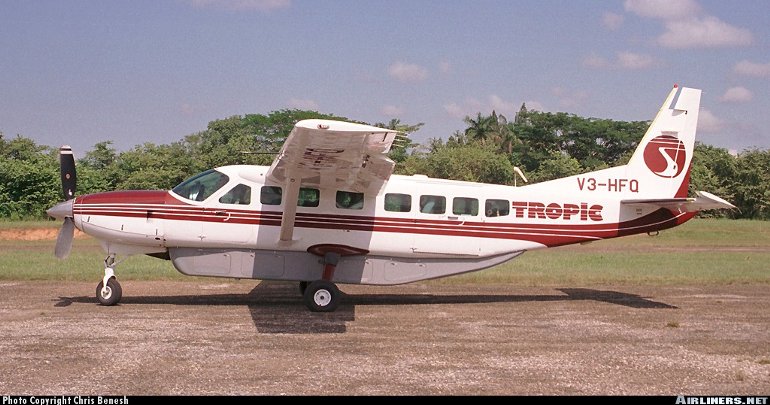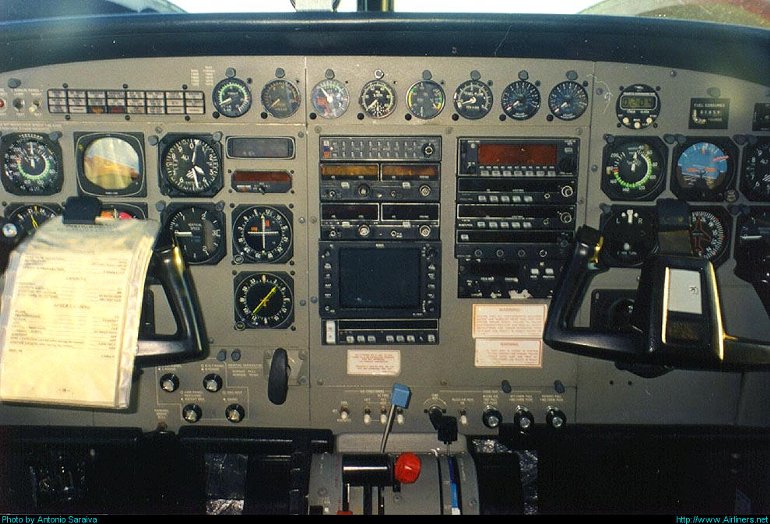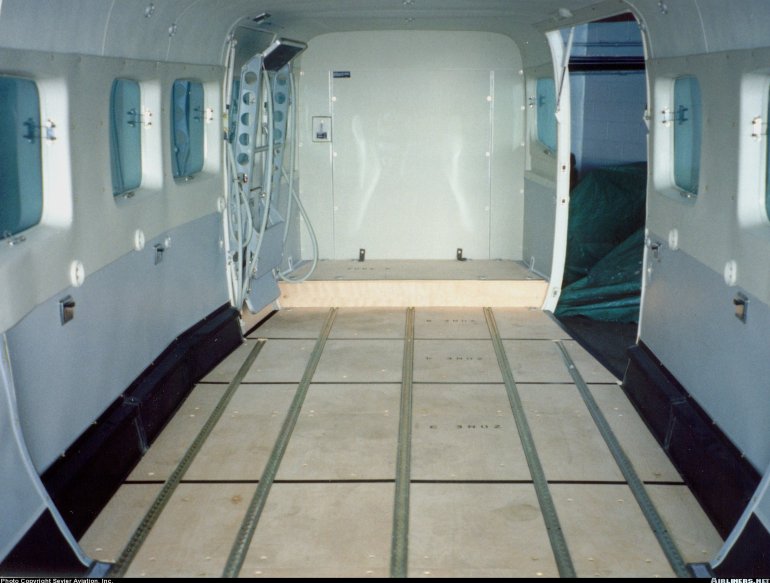Aircraft Technical Data
Cessna 208 Caravan I, Grand Caravan & Cargomaster



| Details | |
| Country of Origin | United States of America |
| Type | Single turboprop utility transport |
| History | With sales exceeding the 1000 mark the useful Caravan is a popular utility workhorse worldwide. Design work for the Caravan dates back to the early eighties. First flight of a prototype occurred on December 9 1982 and certification was granted in October 1984. When production began the following year it became the first all new single engine turboprop powered aircraft to achieve production status. The Caravan I has had a close association with US package freight specialist Federal Express (FedEx), on whose request Cessna especially developed two pure freight versions. The first of these was the 208A Cargomaster (40 delivered), the second was the stretched 208B Super Cargomaster (260 delivered). The first Super Cargomaster flew in 1986 and features a 1.22m (4ft) stretch and greater payload capacity, including an under fuselage cargo pannier. FedEx's aircraft lack cabin windows. The 208B Grand Caravan first flew in 1990 and like the Super Cargomaster is a stretched version of the basic Caravan powered by a 505kW (675shp) PT6A-114. It can seat up to 14 passengers. Announced at the 1997 NBAA convention, the 208-675 has replaced the basic 208. It combines the standard length airframe of the 208 with the more powerful PT6A-114 of the 208B. Underbelly cargo pods, floats and skis are offered as options on the Caravan I family, and the type is easily converted from freight to passenger configurations. A military/special missions version of the 208A, dubbed the U-27A, is also on offer. The Brazilian Air Force designation is C-98. Soloy is offering a dual-engine conversion of the 208B, named Pathfinder 21. This version is powered by a 991kW (1329shp) Pratt & Whitney Canada/Soloy Dual Pac powerplant, consisting of two PT6D-114A engines driving a single propeller. Other distinguishing features of the Pathfinder 21 include a 72in cabin stretch behind the wing and a large integral cargo pod. |
| Powerplants | 208 - One 450kW (600shp) Pratt & Whitney Canada PT6A-114 turboprop driving a three blade variable pitch Hartzell propeller. 208-675, 208B Super Cargomaster & Grand Caravan - One 505kW (675shp) PT6A-114A |
| Performance | 208A - Max cruising speed 340km/h (184kt). Initial rate of climb 1215ft/min. Range with max fuel and reserves 1797km (970nm), range with max fuel and reserves 2066km (1115nm). 208B Super Cargomaster - Max cruising speed 317km/h (171kt). Max initial rate of climb 770ft/min. Range with max fuel and reserves 2000km (1080nm). Grand Caravan - Max cruising speed 337km/h (182kt). Max initial rate of climb 975ft/min. Range with max fuel and reserves 1667km (900nm). |
| Weights | 208A - Empty 1725kg (3800lb), max takeoff 3310kg (7300lb). 208B Super Cargomaster - Empty 2073kg (4570lb), max takeoff 3970kg (8750lb). Grand Caravan - Empty equipped 2250kg (4965lb), max takeoff 3970kg (8750lb). |
| Dimensions | 208A - Wing span 15.88m (52ft 1in), length 11.46m (37ft 7in), height 4.32m (14ft 2in). Wing area 26.0m2 (279.4sq ft). 208B - Same except for length 12.67m (41ft 7in). |
| Capacity | 208A - Pilot and typically nine passengers, or up to 14 with an FAA FAR Part 23 waiver. Cargo capacity 1360kg (3000lb). 208B - Passenger accommodation same. Cargo capacity for 1587kg (3500lb). Grand Caravan - One pilot and up to 14 passengers. |
| Production | 1000th unit delivered in October 1998. More than 60% of production sold outside the United States |
| Related Links | Cessna 208 Caravan I, Grand Caravan & Cargomaster |
The backbone of this section is from the The International Directory of Civil Aircraft by Gerard Frawley and used with permission. To get your own copy of the book click here. |
|








